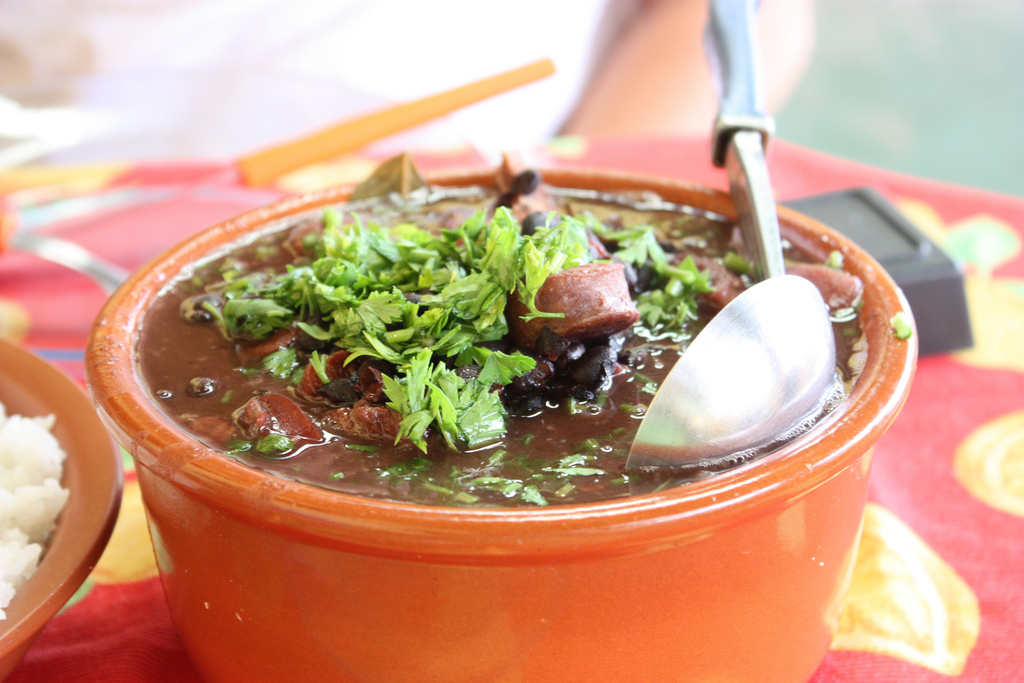Brazilian cuisine has a relatively high level of recognition among US consumers, thanks to the popularity of Brazilian-style steakhouses and the spike in interest in Brazilian food and drinks around the 2016 Summer Olympics in Rio de Janeiro. Brazilian fare is still going strong on US menus and diners are gaining a deeper understanding of the cuisine beyond grilled meats and the classic caipirinha. Chefs are drawing on influences from the South American country to create modern dishes that blend Brazilian elements with current US food trends, and new concepts from Brazil are primed to enter the US market as interest in Latin American cuisine grows.
US consumers “want to experiment with new flavors and ethnic cuisine — especially from Latin and South America — and Brazilian food is no exception,” said Gerald Oksanen, an analyst at Datassential.
Brazilian steakhouse chain Fogo de Chao has helped raise the profile of the country’s churrascaria tradition of grilled meats in the US. The chain entered the US market in 1997 and has since grown to include 33 US locations as of the end of the 2016 fiscal year.
“Having started in Brazil, and being one of the first to introduce Brazilian cuisine in the US, we believe that we’re at the forefront in helping drive that popularity,” said Larry Johnson, CEO at Fogo de Chao.
While representations of Mexican and other Latin American cuisines in the US have been largely Americanized, Fogo de Chao’s Brazilian roots kept the brand invested in presenting an authentic take on the country’s cuisine. The chain has brought several chefs to the US from its Brazilian restaurants over the years, Johnson said.
“We have an ongoing gaucho chef recruitment and development process that helps to ensure the success of each new chef,” he said. “Our chefs are experts on meats and Southern Brazilian cuisine. During training, they learn to be responsible for every culinary aspect of the business, which includes ordering and receiving meats, preparation and butchering, skewing, grilling, and carving meats tableside to our guests.
While the brand puts an emphasis on traditional Brazilian flavor, none of the meat in its US restaurants comes from Brazil, Mary Nelson, a spokeswoman for the chain, said in a recent email to Reuters. Brazil is the world’s largest meat exporter, but Brazilian restaurants in the US are mostly unfazed by the recent US ban on Brazilian meat imports since they don’t source meat from the country, Reuters reported.
Hand-carved meat is a mainstay of the Fogo de Chao menu and most of the cuts have been on the menu since the first restaurant opened in Brazil in 1979, Johnson said. However, the chain recently rolled out a new menu called Bar Fogo that aims to infuse Brazilian flavor into trendy American bar staples.
“Brazilian inspiration can be found at the heart of our new cocktail and small plate menus. For instance, our new craft caipirinha selections showcase seasonal fruits and ingredients that are both the most popular in Brazil and on-trend in the US,” said Johnson. The Xingu Braised Beef Rib sliders made with a black lager from Brazil called Xingu and topped with smoked provolone and caramelized onions on a brioche bun are another example of Brazilian ingredients being tailored for the US happy hour crowd.
As Fogo de Chao aims to broaden its appeal with the Bar Fogo menu, other concepts are also introducing a variety of Brazilian flavor to US consumers.
“The Brazilian steakhouse is no longer the only option as food trucks spread Brazilian flavors and fusion concepts. Common dishes found aboard these trucks include picanha steak, pastels, “street pies” like empanadas and coxinha, a croquette filled with shredded chicken and cream cheese,” Datassential’s Oksanen said.
A 2014 report from Datassential MenuTrends on Brazilian cuisine found that while awareness of some of these Brazilian foods still had plenty of room to grow, those who were familiar with these items overwhelmingly prefered authentic versions to Americanized styles. These findings could be a good sign for authentic Brazilian concepts looking to make inroads in the US, such as Pao to Go, a chain that specializes in the popover-like puffs called pao de queijo.
Seven in 10 US consumers said they would try the large pao de queijo offered from Pao to Go, according to Datassential, and there are plans for the chain to expand to the US. A popular breakfast item in Brazil, pao de queijo could be positioned for success in the US thanks to rising interest in global flavors at breakfast.
__________________________________________________
If you enjoyed this article, join SmartBrief’s email list for more stories about the food and beverage industry. We offer 20 newsletters covering the industry from restaurants to food manufacturing.
